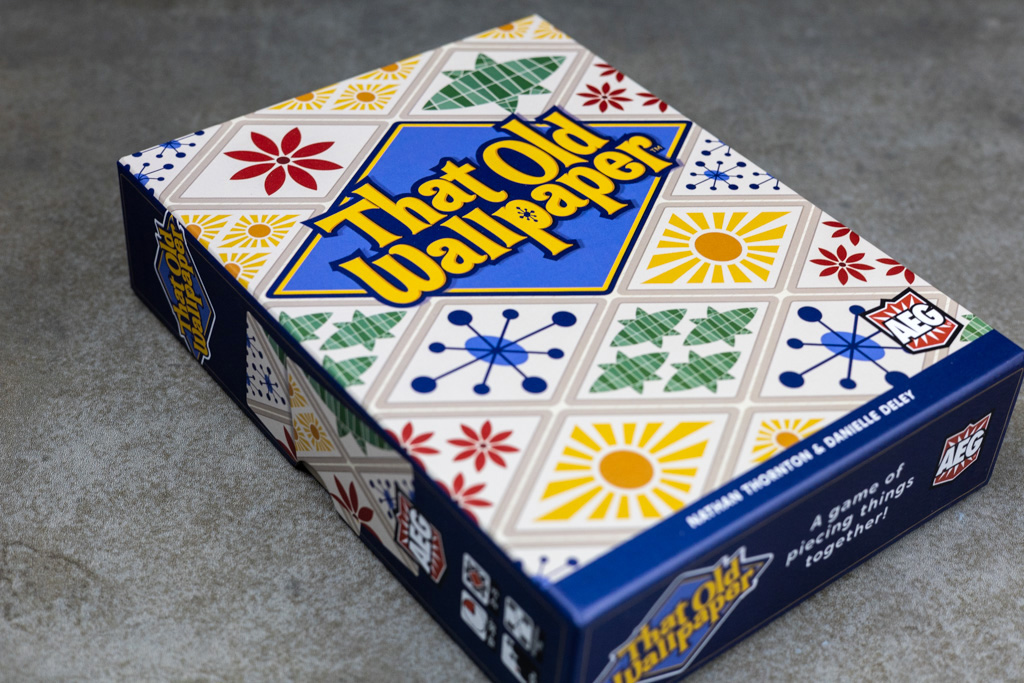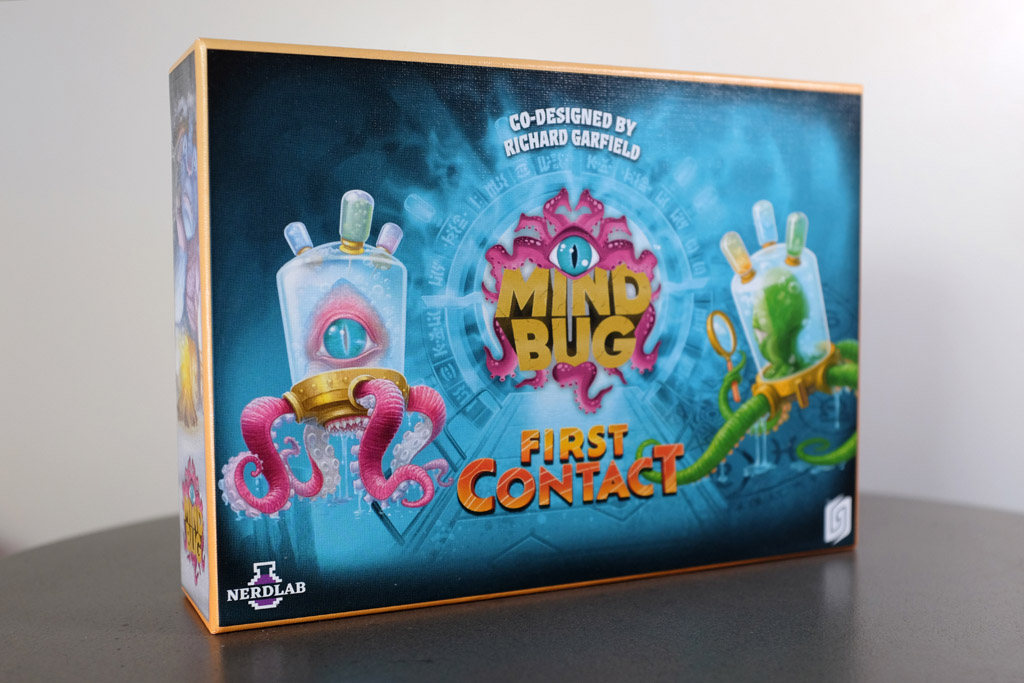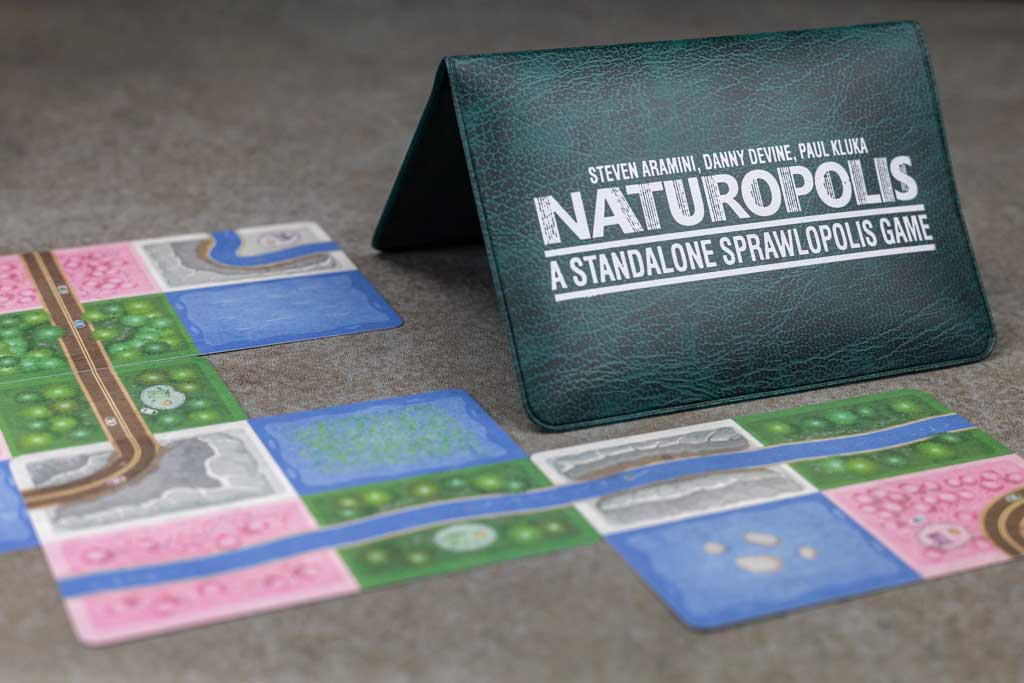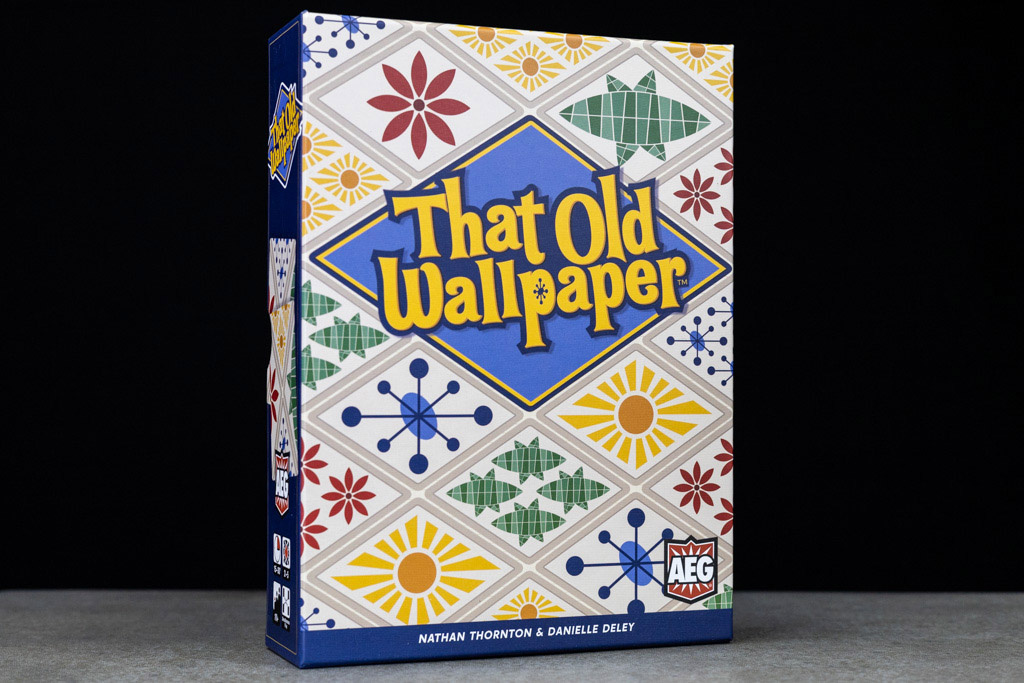
That Old Wallpaper
We enjoy all kinds of games but often play light games as a family. Differing attention spans and different tastes for game mechanics usually push our family toward games that are quick and easy. That Old Wallpaper fits our needs for a casual card game that tests your visual-spatial abilities. This game turned out to be a bit more cumbersome than other causal games we have but we were willing to give the game a shot after AEG asked us to review this title.
That Old Wallpaper is a card game designed by Danielle Deley and Nathan Thornton that is designed for 2-5 players age 10 and up. In our experience younger players could play as well, maybe with a little rules and scoring guidance from someone older. The game takes 15-30 minutes to play and can be played in a casual way where players take their time creating a “wall” of wallpaper.
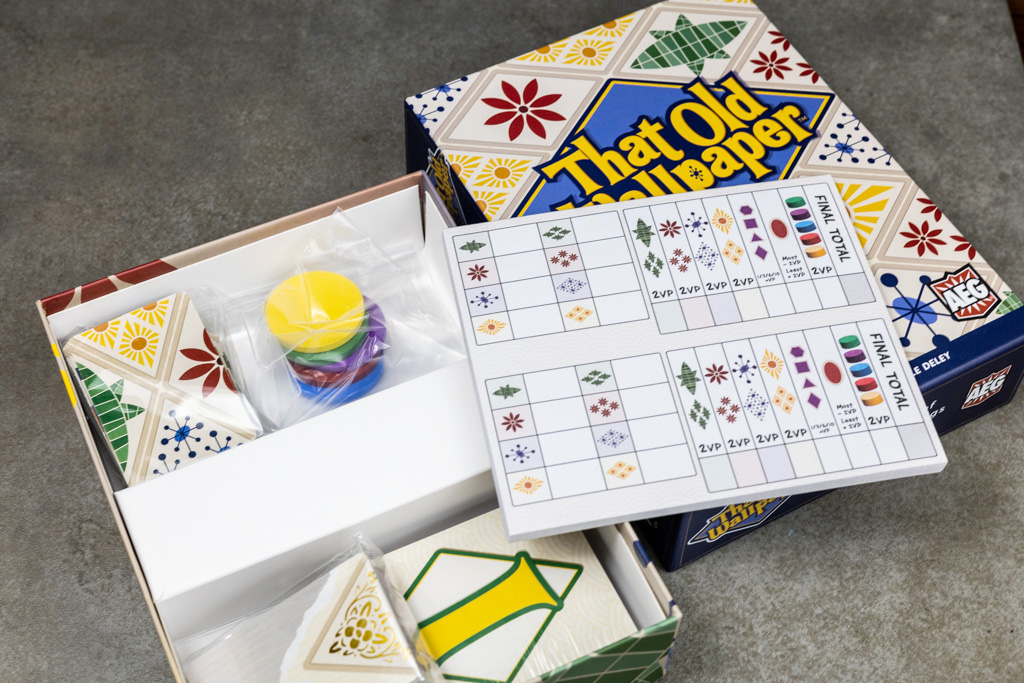
Two Player Option
That Old Wallpaper requires three to five “real” players but it can accommodate two players with an NPC. For a two player game, players will use a phantom player called “Grandma” who does not play for points. She is simply part of the algorithm influencing the game without getting directly involved.
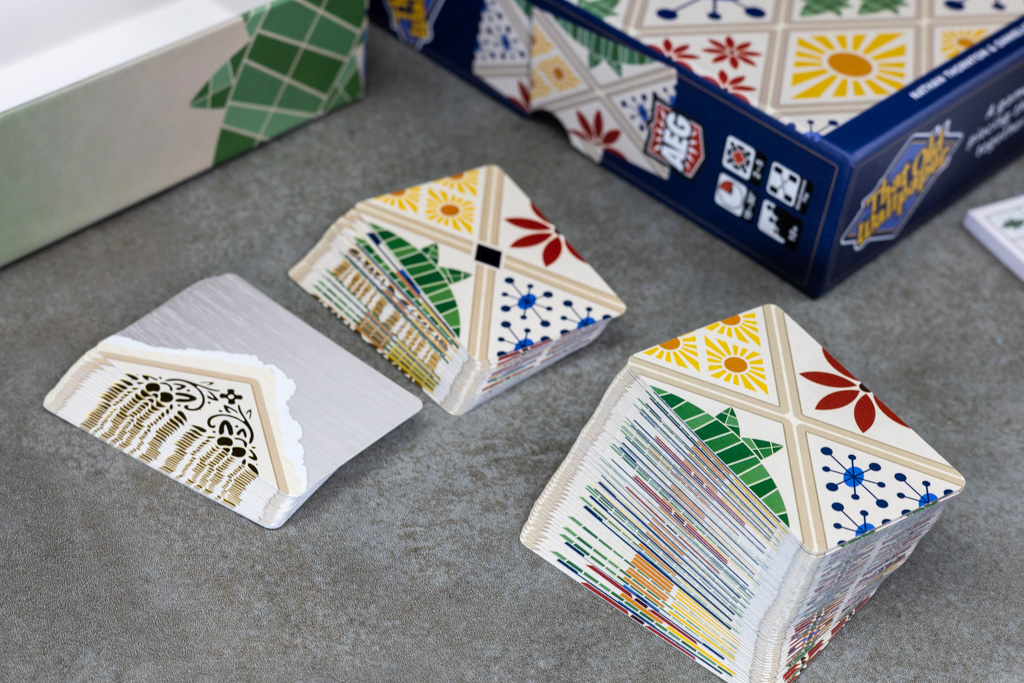
How to Play That Old Wallpaper
To begin the game, each player is given a set of player cards that are numbered one through ten. Players then shuffle this deck and draw a hand of 5 cards each.
Each turn, players select one card numbered between 1 and 10, aiming to avoid choosing the same number as their opponents. Player tokens are placed in age order near the play area. Each round, players choose a numbered cards to bid on wallpaper pattern cards, which are placed in their tableau.
The objective is to create matching pairs of left and right halves of wallpaper patterns while maintaining a balance between large and small symbols of each color. The winner is the player who successfully amasses the most matching patterns.
The game proceeds through three iterations of gameplay, and there are six rounds per iteration. Players bid with one of the five numbered cards in their hands. The goal is to strategically place their bids on the face-up wallpaper cards, with the lowest bid securing the card closest to the wallpaper deck, and the highest bid claiming the card furthest away. Middle bids acquire the cards in between, in numerical order.
As the game progresses it gets harder to balance the mix of large and small symbols in each color while focusing on acquiring extra cards and expanding their collection of matching wallpaper patterns. To win the game, players must pay attention to the patterns they need for their wall, and the patterns that are available for bidding per round.
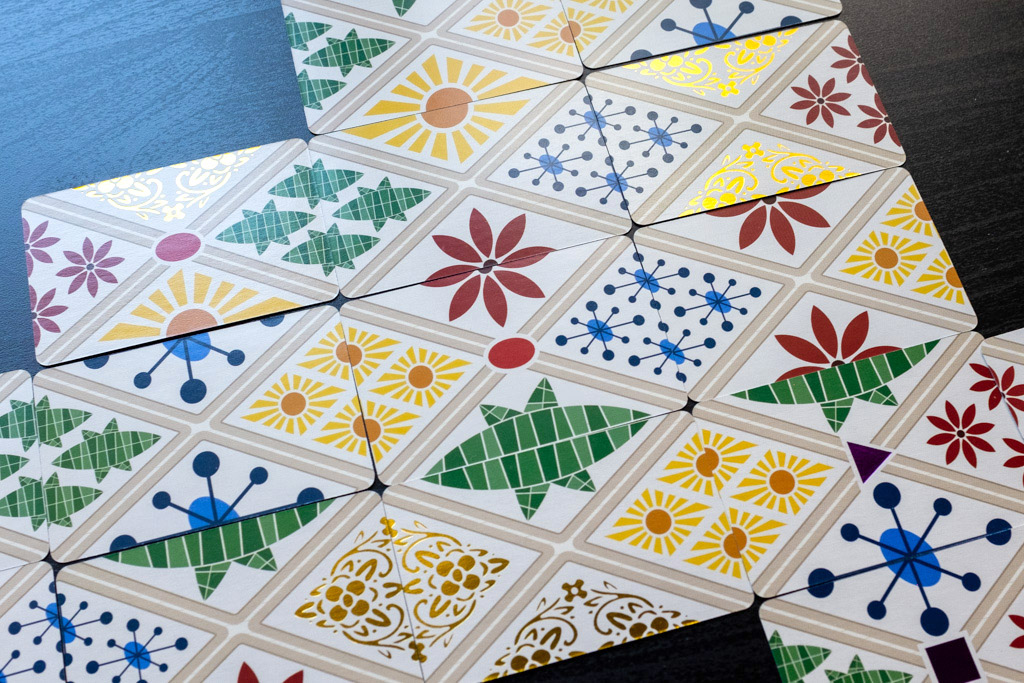
Gameplay Experience
The gameplay of This Old Wallpaper is straightforward and doesn’t require heavy thinking. It’s easy to teach and the type of game you might play while multitasking or as a side game for low key small social gatherings. Part of this game’s appeal is that it’s easy to step in and out of play without worrying about losing track of the game. However, the game needs plenty of open table space to play. The more the players, the bigger the space needed. Each player will be building their wall within their space.
The beauty of That Old Wallpaper stems from the game’s ingenious mechanics, components, and the thoughtful integration of these elements. For example, by representing players with their color tokens, the game arranges them in a sequential line. Should two or more players enter into a tie situation, whomever’s token closest to the front of the line wins the tie and gets the reward, but the winning token will have to move to the back of the line and let another player take the front of the line for the next round and so on.
There are 18 rounds in a game, so there will be plenty of opportunities to run into a tie situation among players; this mechanic gives all players an equal chance to win a tie. These tokens are like “peacemakers” because they provide instant conflict resolution at the table. This effectively takes the burden of tie-breaking off of the players. At the end of the game, players tally up the results on their wall using a guided scoring sheet; the player with the highest score wins.
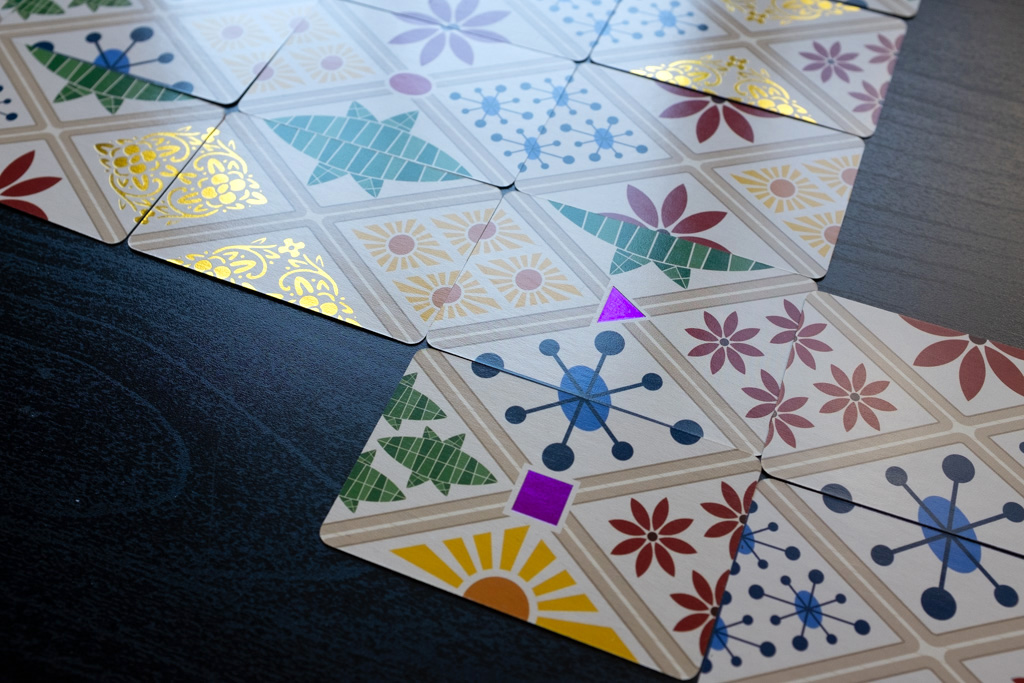
Criticisms
While we liked this title, the game runs a bit longer than expected. The number of rounds can drag on if you’re not playing quickly. The game components are lovely (especially foil printing on the cards) but the cards are small and slippery. Our tableaus were shifting around and required some upkeep.
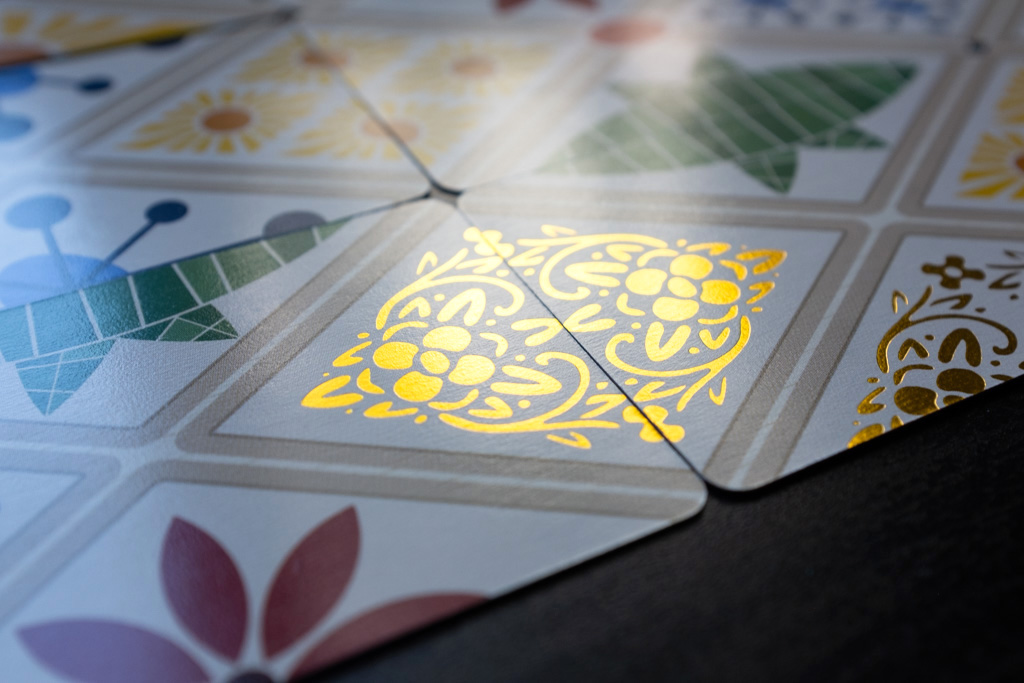
Conclusion
We had fun with this game but it ran longer than expected. We would play again with friends or family who like lighter games or who like to talk and do other things while gaming. Planning and building the tableau of wallpaper is fun. The game can have a therapeutic feel if you accept that the patterns on the wallpaper are asymmetrical. The bidding aspect reminds me a bit of Jaipur. The game feels light and not very competitive. I recommend approaching this title like a group art project where everyone gets to build their own wall together.
